|
Battle of Prairie Grove, Arkansas
Page4 |
|
|
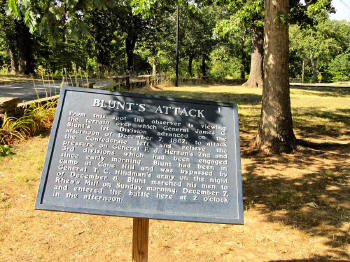 |
|
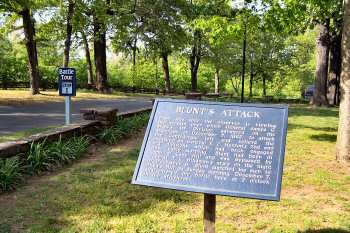 |
|
(2011)
Enlarge Battlefield
Tour Stop 1: Shoup Chooses the Position
Tour Guide: Confederate infantry marched up the
road to the left and arrived in time to hear the Southern cavalry
skirmishing with General Herrons Federals at Walnut Grove (about two miles
east
of here). General Francis A. Shoup decided to deploy his division along the
ridge from the road to beyond the Borden house [Stop #4] east of this
location. Upon arriving, General Hindman approved the disposition, noting
the position was an exceedingly strong one. Dr. Hugh Rogers house sat
across the road northwest of here
William J. Bechmann III photo |
|
(5-05) Prairie Grove Battlefield today offers hundreds of acres of
preserved battlefield and both walking and driving tours. Tour Stop One on
both tours is just north of the Hindman Hall parking lot and marks the
spot where the second phase of the battle began on the afternoon of
December 7, 1862, when General James G. Blunt's Federal division attacked
the left side of the Confederate lines. Blunt's attacks were beaten back,
as were Confederate counterattacks
Dale Cox photo
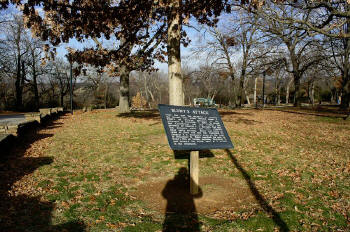
(Dec 2013)
Enlarge Blunt's Attack
Billy Richmond photo |
|
|
|
|
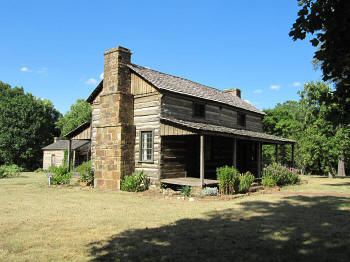 |
|
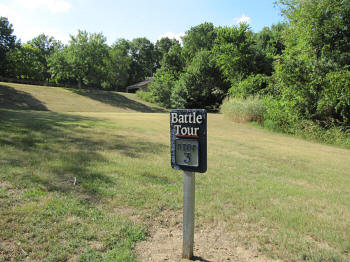 |
|
|
|
|
|
(2011)
Enlarge Battlefield
Tour Stop 2: Latta House & Cellar
Tour Guide: While not on the original
battlefield, the Latta house and cellar (along
with the other structures) remind us that there
were four family homes on the ridge where the
Confederate Army waited for the Federals. Warned
of the approaching conflict, Mrs.
Borden took her three children west along
the ridge, stopping at the homes of Dr. Hugh
Rogers and William Rogers before reaching the
William Morton house [Stop #13] with the other
families. When the fighting got near, the twenty
men, women, and children hid in the Morton cellar,
similar to the one west of the Latta House
William J. Bechmann III photo |
|
(2011)
Enlarge Battlefield
Tour Stop 3: Ravine
Tour Guide: This natural ravine runs north and
south through the Prairie Grove ridge. Soldiers in General James F. Fagans
Confederate brigade lay here around noon waiting for the Union Army. When
the 20th Wisconsin Infantry appeared to the east, the Southern troops poured
a heavy fire of small arms into the blue ranks, before charging toward the
Borden house [Stop #4].
William J. Bechmann III photo
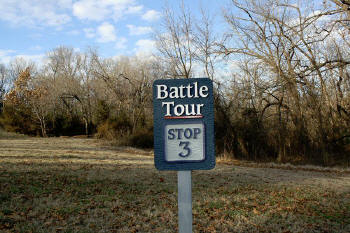
(Dec 2013)
Enlarge Tour Stop-3: Ravine
Billy Richmond photo |
|
|
|
|
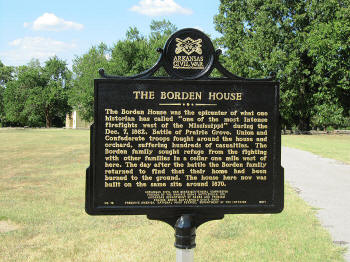 |
|
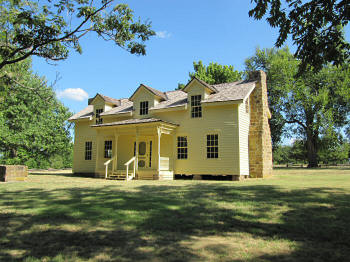 |
|
(2011)
Enlarge Battlefield
Tour Stop 4: Borden House &
Orchard
Tour Guide: The heaviest fighting of the day took place around this
house and orchard. After the battle, General Herron reported 250 dead within
a 100-yard radius of the house. One soldier stated the ground was muddy
with blood on the hillside where Confederate cannons under the command of
Captain William D. Blocher sat during the battle. More information about
this area can be found by taking the short walk to the Borden house
William J. Bechmann III photo
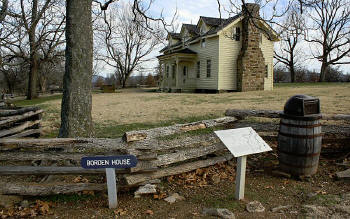
(Dec 2013)
Enlarge View from west of
the Borden House
Billy Richmond photo |
|
(2011)
Enlarge Borden House
 Borden House Interpretive Marker (Map)
Borden House Interpretive Marker (Map)
 Borden House Panorama
Borden House Panorama
Tour Guide:
The Borden House Sector. Some of the heaviest fighting of the day took
place around this house and the orchard to the south. Archibald Borden, a
prosperous farmer, owned most of the fields within a 1/2-mile radius of
the house. Before the Civil War, he served as Postmaster of the Ada Post
Office. The house which stood here during the battle was burned sometime
during the war. Borden built the present structure, a close copy of the
original, around 1867. Confederate snipers hid in the upstairs windows
during the battle. Early in the fighting, Brig. Gen. Jo Shelby's
Missourians were stationed in this area. Among their numbers was the later
infamous outlaw, Frank James. Capt. William Blocher's Arkansas battery was
positioned about 50 yards east of the house. Herron's infantry swarmed up
the ridge from the north and northeast, overrunning the house and battery
but were halted near the southern edge of the orchard by massed fire from
Shelby's and Fagan's brigades. In the seesaw fighting, the house changed
hands several times. After the battle, Herron reported 250 dead within a
100-yard radius of the house and ground around Blocher's battery was said
to be "muddy with blood"
William J. Bechmann III photo
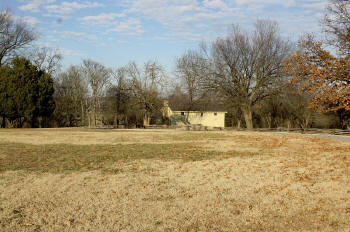
(Dec 2013)
Enlarge Borden House from
near the Apple Orchard
Billy Richmond photo |
|
|
|
|
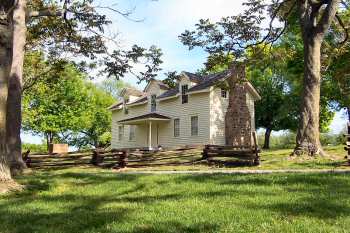 |
|
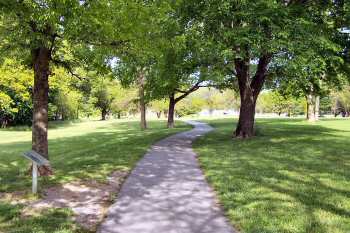 |
|
(5-05) Heavy fighting raged
around the Borden House and adjacent orchard. Federal officers estimated
that as many as 250 men were killed in a 100-yard radius of the house.
Federal troops charged up the ridge and past the house into the orchard,
only to find themselves cut to pieces by well-positioned Confederate
infantry. The house was burned at the end of the battle, but was rebuilt
on the same foundations after the war
Dale Cox photo
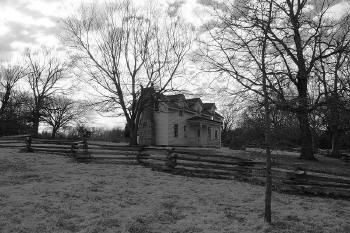
(Dec 2013)
Enlarge Borden House
Billy Richmond photo |
|
(5-05) This is a view
looking east from the Borden House to the right flank of the Confederate
line. This section of the field was held by Colonel Jo Shelby's
hard-fighting cavalry
Dale Cox photo |












